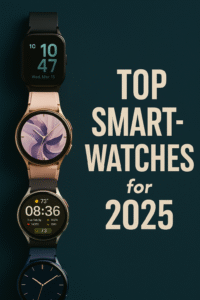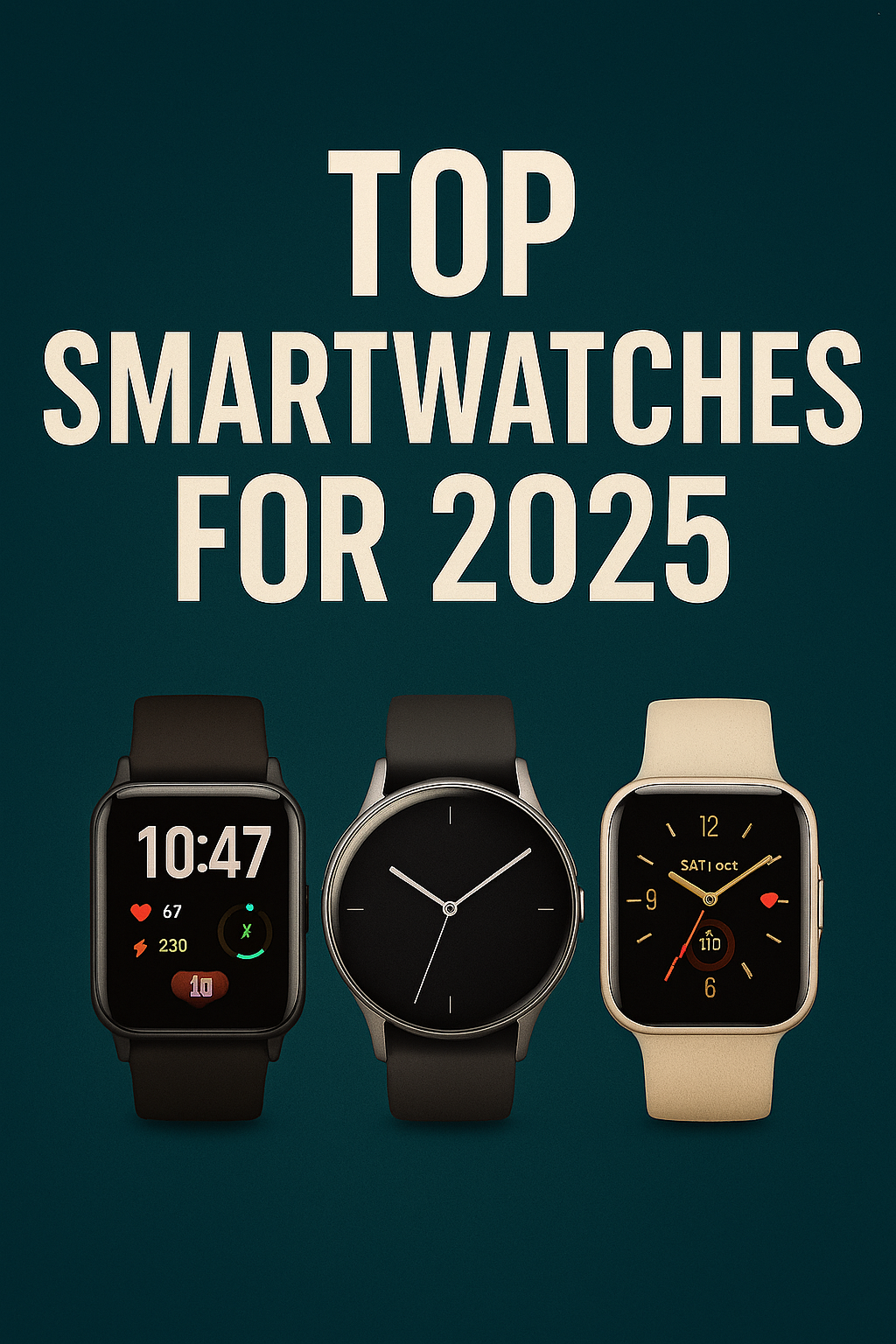Introduction to Smartwatches and Their Evolution
Smartwatches have revolutionized the way we interact with technology.
Initially, they started as simple extensions of smartphones.
However, their capabilities have expanded significantly over the years.
Early Concepts and Developments
The first smartwatch made its debut decades ago.
These early devices offered limited features, mainly focusing on timekeeping.
Eventually, companies like Sony and Fossil began exploring more advanced functionalities.
Integration with Health and Fitness
Health tracking became a game-changer for smartwatches.
Fitness features, such as heart rate monitors and step counters, gained popularity.
This integration attracted health-conscious consumers and fitness enthusiasts.
Technological Advancements
Advancements in technology fueled growth in smartwatch features.
Touchscreens, GPS, and wireless connectivity became standard features.
Moreover, manufacturers started incorporating voice assistants for better usability.
The Impact of Software Ecosystems
Software ecosystems played a crucial role in smartwatch evolution.
Operating systems like Wear OS and watchOS enhanced user experience.
These platforms facilitate app development and ensure compatibility across devices.
Current Trends and Future Directions
Today, smartwatches offer a broad range of functionalities.
Users can receive notifications, track workouts, and control smart home devices.
Looking ahead, AI and machine learning will further enhance their capabilities.
Key Features to Look for in 2025 Smartwatches
Advanced Health Monitoring
Health monitoring features have improved significantly in recent years.
Expect 2025 smartwatches to include advanced heart rate sensors.
These devices will monitor your blood oxygen levels continuously.
Moreover, they will feature sleep tracking for better rest insights.
Some models might even measure your stress levels through skin response.
Enhanced Battery Life
Battery life remains a primary concern for smartwatch users.
In 2025, look for models boasting multi-day battery life.
Innovative battery technologies will reduce charging frequency.
This enhancement will allow users to wear smartwatches for longer periods.
Furthermore, solar charging options may become mainstream.
Improved Connectivity Features
Smartwatches in 2025 will offer enhanced connectivity options.
They will easily connect to Wi-Fi and mobile networks without issues.
Many will support 5G for faster data transmission.
Users can expect seamless integration with IoT devices at home.
This functionality will allow you to control smart appliances conveniently.
Customization and Personalization
Customization options for smartwatches will reach new heights.
Users will have access to extensive watch face designs and themes.
In addition, straps will be interchangeable to match personal styles.
Advanced software may allow personalized notifications and app layouts.
This flexibility will help users tailor their devices to their needs.
Innovative Design and Durability
The design of smartwatches will evolve significantly by 2025.
They will feature sleeker profiles and lightweight materials.
Expect improved durability with scratch-resistant and water-resistant designs.
Many models will meet military-grade ratings for extreme conditions.
This combination of style and toughness will attract a larger audience.
Intelligent AI Integration
AI integration will enhance the functionality of smartwatches.
These devices will learn user habits and preferences over time.
This feature will improve health insights and notifications.
AI assistants will facilitate voice commands for hands-free use.
Moreover, smarter notifications will prioritize important messages.
Top Smartwatch Brands Dominating the Market in 2025
Leading Innovators in Smartwatch Technology
Several brands propel the smartwatch industry forward in 2025.
Apple continues to be a frontrunner with its advanced health features.
The Apple Watch Series 10 offers seamless integration with iOS devices.
Additionally, Samsung showcases its Galaxy Watch 6, which focuses on fitness tracking.
This model features an array of sensors for enhanced health monitoring.
Emerging Players Making Their Mark
In contrast to established brands, newer companies are gaining attention.
Fossil Group brings stylish designs with powerful functionality.
Their Gen 6 Hybrid smartwatch attracts fashion-conscious consumers.
Garmin continues to cater to athletes with specialized features.
The Forerunner 265 series provides advanced running metrics and GPS accuracy.
Smartwatch Features Shaping Consumer Choices
Consumers increasingly prioritize health tracking in their smartwatch choices.
Wearable devices now monitor heart rates, sleep patterns, and stress levels.
Customization options also play a critical role in product selection.
Brands that offer interchangeable bands and watch faces attract more users.
Market Trends Influencing Smartwatch Development
The smartwatch market sees growing emphasis on battery life and durability.
Manufacturers are exploring solar charging technologies for extended use.
Moreover, classic-style watches are re-emerging in the tech space.
These trends reflect consumer preferences for function and fashion.

Comparison of Fitness Tracking Features Across Leading Models
Overview of Fitness Tracking Capabilities
Smartwatches have evolved to offer exceptional fitness tracking capabilities.
Many models now provide heart rate monitoring, sleep tracking, and step counting.
Additionally, they include specialized features for various sports and activities.
Heart Rate Monitoring
Heart rate monitoring has become a standard feature in smartwatches.
The accuracy of heart rate sensors differs among brands.
For instance, the Titan Watch offers near medical-grade accuracy.
In contrast, the Pulse Pro delivers basic heart rate tracking.
Sleep Tracking Features
Sleep tracking is vital for maintaining overall health.
The Galaxy Fit tracks sleep stages, providing in-depth insights.
By comparison, the Aura Watch offers a simpler sleep duration tracker.
Moreover, both watches provide sleep quality assessments based on movement data.
Step Counting and Activity Tracking
Step counting remains a fundamental fitness metric.
The Apex Watch boasts a robust activity tracker with multiple sport modes.
On the other hand, the Fitness Band focuses solely on step counts.
Users seeking comprehensive activity insights might prefer the Apex Watch.
Special Features and Innovations
Leading models introduce innovative features regularly.
The ActiveWatch includes VO2 max estimation, enhancing workout insights.
Conversely, the SmartGadget focuses on providing basic activity data.
This makes the ActiveWatch a better choice for serious athletes.
Battery Life Considerations
Battery life significantly affects user experience in smartwatches.
Many premier models can last up to two weeks on a single charge.
However, devices like the FitBand need a daily charge for optimal performance.
Users prioritizing longevity should consider the longer-lasting options.
User-Friendly Interfaces
A user-friendly interface enhances the experience of tracking fitness.
The Titan Watch features an intuitive touchscreen for easy navigation.
In contrast, the Tracker 3000 may present a more complex interface.
Ultimately, ease of use can influence purchasing decisions.
Integration of Health Monitoring Technologies in 2025
Advancements in Wearable Technology
Wearable technology experiences rapid advancements each year.
Smartwatches now feature sophisticated health monitoring capabilities.
In 2025, these devices will offer more accurate health insights.
Additionally, sensors will improve for cardiovascular and respiratory monitoring.
Real-Time Health Data Tracking
Real-time health data tracking becomes standard in smartwatches.
Users can monitor vital signs effortlessly throughout the day.
This continuous data collection aids in personalizing health recommendations.
Furthermore, users will receive alerts about any concerning health anomalies.
Integration with Medical Services
Integration with medical services enhances smartwatch functionalities.
Doctors can access patients’ health data remotely in real time.
This collaboration will streamline diagnosis and treatment plans.
Healthcare providers will appreciate the increased access to patient data.
Data Privacy and Security Enhancements
As health data becomes more sensitive, security is paramount.
In 2025, smartwatch manufacturers will enhance data protection measures.
Users will gain control over their health data privacy settings.
Additionally, encryption technologies will protect personal information.
New Health Metrics Visualization
New visualization tools will provide better health metric interpretation.
Smartwatches will use vibrant graphics to display health data trends.
This user-friendly format enhances comprehension of individual health status.
Moreover, users will have tools to set health goals and track progress.
Community and Social Features
Increased community features will foster user engagement and motivation.
Smartwatches will allow users to share their health achievements.
Additionally, users can compete in challenges to promote physical activity.
This social interaction encourages healthier lifestyle choices.
Smartwatch Customization Options and Personalization Trends
Understanding Customization Features
Smartwatches now offer diverse customization features for users.
Personalizing watch faces allows people to express their style.
Users can choose from different themes, colors, and layouts.
Additionally, customizable straps and bands enhance comfort and aesthetics.
Moreover, interchangeable bands let users adapt their watches to occasions.
The Role of Apps in Personalization
Applications significantly influence smartwatch personalization.
Many apps offer customizable features such as widgets.
Widgets can display vital information like health stats and notifications.
Furthermore, health monitoring apps allow users to track fitness goals.
This technology makes personal health management accessible.
Social and Community Engagement
Social features play a vital role in customization trends.
Users can share their designs and personal experiences online.
This engagement fosters a sense of community among smartwatch users.
Additionally, brands often host contests for the best custom designs.
Such initiatives encourage creativity and innovation.
Trends in AI-Driven Personalization
Artificial intelligence is transforming how users customize smartwatches.
AI can suggest watch faces based on user preferences and usage.
This technology enhances personalization, making it smarter and more intuitive.
Moreover, personalized notifications improve user experience significantly.
Users receive relevant alerts, making smartwatches more functional.
Future Customization Possibilities
The future of smartwatch customization looks promising and exciting.
Advancements in technology will likely enhance personalization options.
For instance, flexible displays may allow users to modify shapes and sizes.
Furthermore, integrating smart textile technology could redefine watch bands.
This innovation will create interactive and adaptive wearables.
Future of Smartwatch Battery Life and Charging Technologies
Advancements in Battery Technology
Smartwatch battery life will significantly improve with new technology.
Research focuses on higher energy density cells.
These batteries will charge faster and last longer.
Battery alternatives such as solid-state options are being developed.
This technology promises better safety and longevity.
Innovative Charging Solutions
Wireless charging will become more efficient and accessible.
Future smartwatches may support reverse wireless charging.
This allows users to charge accessories directly from their watch.
Solar charging technology may also see more application in smartwatches.
Integrating solar cells can provide extended battery life in outdoor activities.
Battery Management Systems
Advanced battery management systems will enhance performance and longevity.
Smart algorithms will optimize power usage based on user habits.
These systems help extend the lifespan of the battery significantly.
Real-time monitoring will provide users with performance insights.
This empowers users to manage their device more effectively.
Sustainability and Environmental Impact
Future batteries will likely focus on sustainable materials.
Manufacturers will seek to minimize environmental footprints.
Recycling programs for old batteries will become standard practice.
Users will find eco-friendly options that do not compromise performance.
Innovation in this area will encourage responsible consumption.
User Reviews and Feedback on the Top Smartwatches of 2025
Highlights from User Experiences
Many users praise the sleek design of the latest smartwatches.
They find the display quality exceptionally vibrant and clear.
Moreover, battery life receives positive feedback across various models.
Many users report lasting up to two days on a single charge.
Comfortable wearability stands out as a key feature among users.
Customer reviews often mention the lightweight materials used.
Fitness Tracking and Health Features
Users appreciate the accuracy of fitness tracking features.
Heart rate monitoring is frequently highlighted as reliable.
Additionally, sleep tracking capabilities receive compliments from many.
Many users see improvements in their health due to these features.
Furthermore, users enjoy the integration with health applications.
App Integration and Usability
Users commonly comment on the seamless app integration of smartwatches.
They find syncing with smartphones to be quick and effortless.
Many appreciate the range of applications available for download.
Most users cite intuitive interfaces as a significant advantage.
Additionally, voice-assistant features receive a lot of positive feedback.
Customer Support and Warranty Experiences
Customers report positive experiences with warranty claims.
Support teams are praised for their prompt responses to issues.
Many users appreciate the helpful documentation provided online.
Furthermore, replacement parts are easily accessible and affordable.
Customers often express satisfaction with the overall service quality.
Comparison Across Different Brands
Brand loyalty plays a significant role in user choices.
Many users stick with brands due to consistent quality over time.
However, some users are open to switching based on new features.
Price vs. performance is a common point of discussion among users.
They often share opinions comparing pros and cons of top models.

